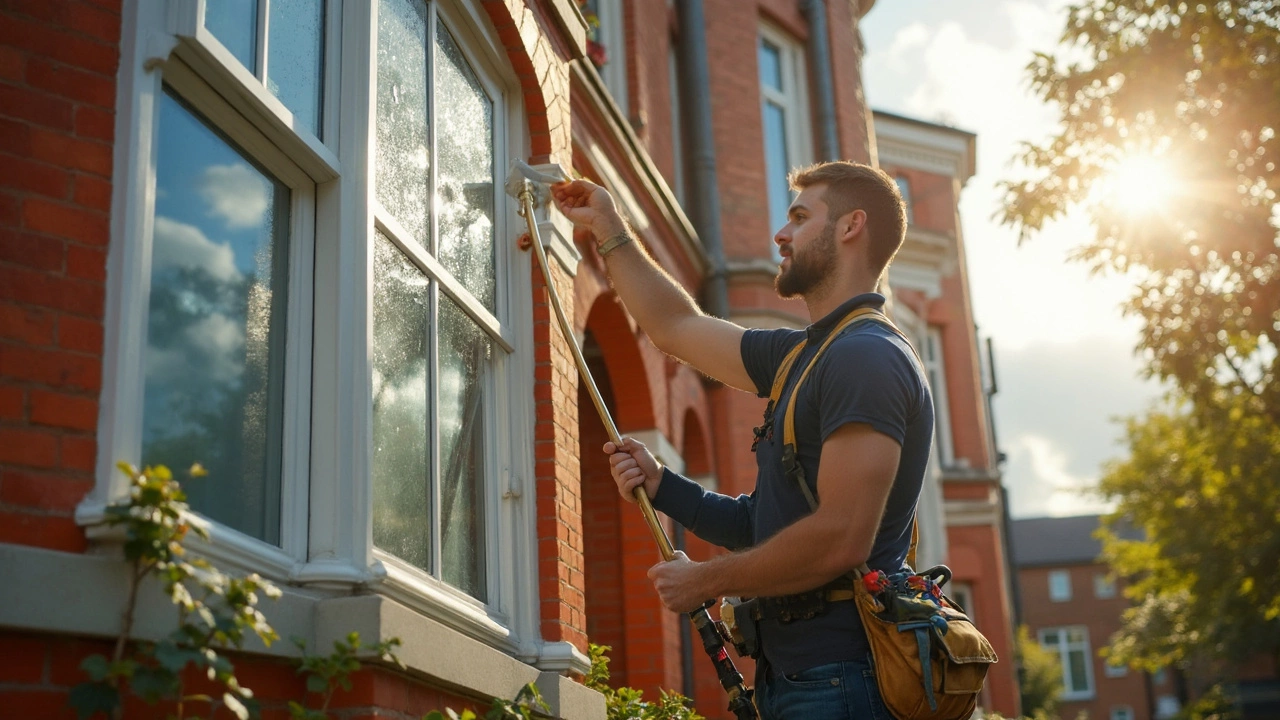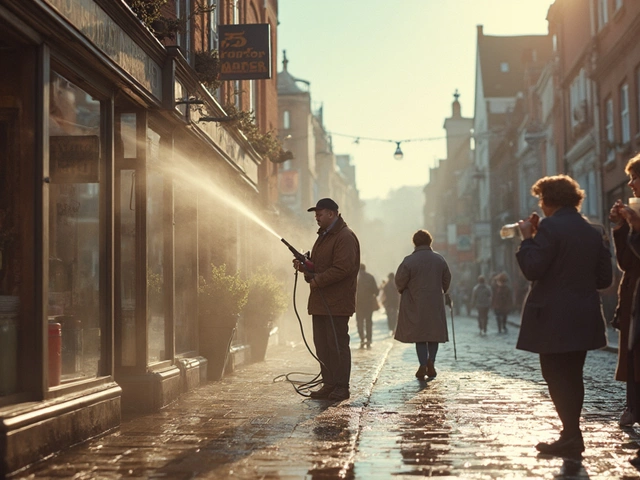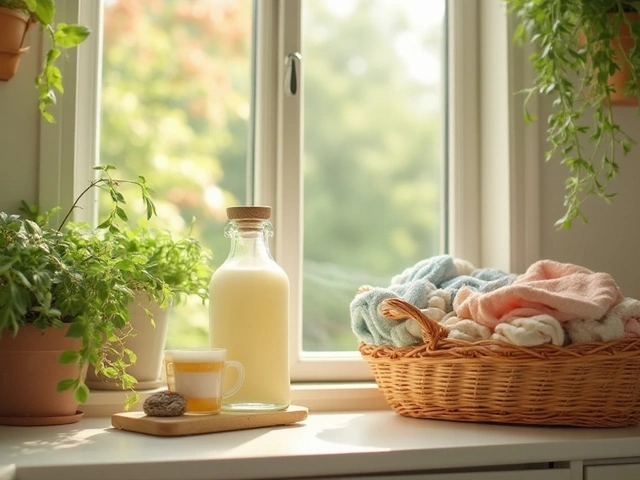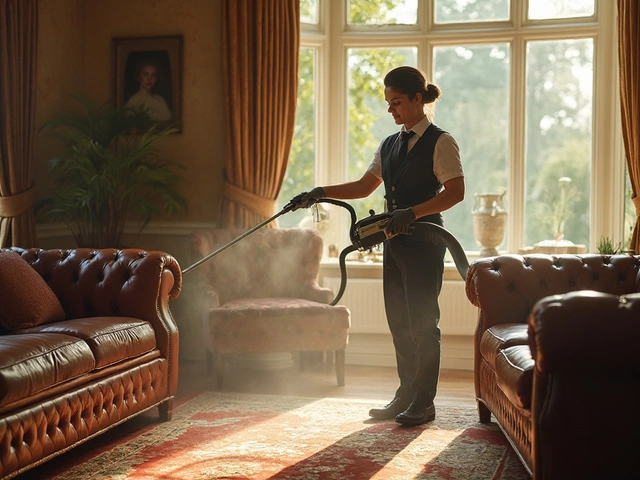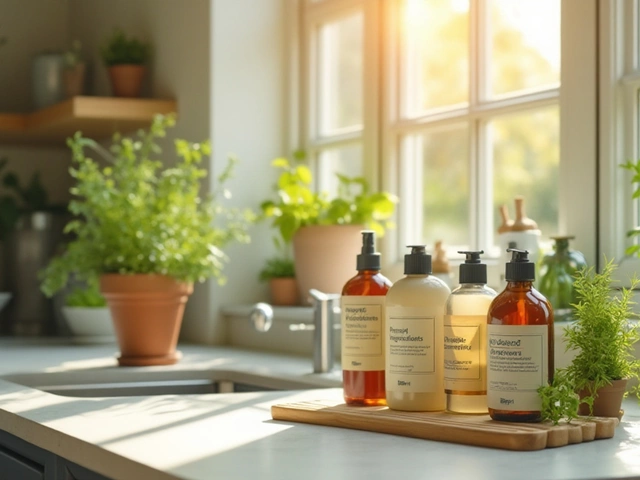You’d think window cleaning would have a straightforward price tag, but there’s actually a lot that changes the cost. It’s not just about counting the number of windows. Got a two-story home? Expect to pay more. Have tricky panes or old storm windows? That’ll bump the price up too.
Most companies charge either per window, per pane, or by the hour. Simple ground-level jobs cost less, while anything requiring a ladder or special equipment adds to the tab. Some cleaners even charge extra if you haven’t had your windows done in a while—because that grime is tougher to tackle.
- What Affects Window Cleaning Prices?
- Average Window Cleaning Costs
- Extras That Change the Bill
- How to Save Money on Window Cleaning
- DIY vs. Hiring a Pro: What’s Better?
What Affects Window Cleaning Prices?
If you’re wondering why your neighbor’s window cleaning bill is so different from yours, here’s what’s driving the numbers. First up, let’s talk about the size of the property. Big houses with lots of windows cost more than small ones, plain and simple. For example, cleaning all the windows in a two-story suburban house can cost twice as much as a condo with just a handful of windows.
Next, there’s the type of windows. Fancy French panes or big picture windows are more work than a regular single-pane slider. Also, windows that open in weird ways, like tilt-in or casement windows, take longer to clean, so prices go up.
How easy it is to reach your windows definitely matters, too. If the cleaner needs a tall ladder or special safety gear for high-up windows, that’s extra time and risk for them—and a bigger bill for you. Houses with a lot of landscaping right below the windows or awkward layouts can see higher prices, since it slows down the job.
Just as important is how dirty your windows are. If they haven’t been cleaned in years and you’ve got layers of grime, expect to pay extra. Some window cleaning companies charge what they call a “first-time” fee for jobs that need extra elbow grease.
Where you live plays a part as well. In big cities, window cleaning prices tend to be higher because of the cost of living and, sometimes, parking hassles. Out in the suburbs or rural areas, it may be a bit less—unless you’re far from everything and travel fees kick in.
- Window type and size
- Number of windows/panes
- Accessibility and height
- How dirty the windows are
- Frequency of cleaning (one-time vs. regular service)
- Your location and local rates
Take a look at this sample comparison of window cleaning cost factors:
| Factor | Raises Price? | Common Extra Charge |
|---|---|---|
| Second/Third Story Windows | Yes | $2–$5 per window extra |
| Very Dirty (First-Time Clean) | Yes | +$40–$80 total |
| Panes with Screens or Storms | Yes | $1–$3 per window |
| Regular Scheduling | No (discounted) | -5–10% |
Getting a clear quote means knowing how many windows you have, what kind they are, and just how much work needs doing. Most pros will also want to see your place or get detailed info before they give you a real number.
Average Window Cleaning Costs
If you've ever called up a few cleaning companies, you already know prices jump around a lot. But let’s get specific. On average across the U.S., you’ll see window cleaning prices ranging from $7 to $15 per window for basic, single-level homes. Double-hung or hard-to-reach windows can push that up to $16–$25 per window. Small apartments are cheaper, while big homes or places with tricky windows pay more.
| Type of Setting | Average Cost per Window |
|---|---|
| Single-Story House | $7–$12 |
| Two-Story House | $12–$18 |
| High-Rise/Commercial | $16–$25+ |
Your total bill gets shaped by the number and size of windows, with bigger panes or patio doors often being charged at a higher rate. Most cleaners have a minimum callout fee too, usually between $50–$100, just so the job’s worth their time. If you’re hoping to get the whole house done, a safe ballpark is $150–$300 for a standard suburban house, but large mansions can hit $400 or more.
What about hourly rates? Some professional window cleaners charge by the hour, especially for complicated jobs, with rates between $40 and $75 per hour. They’ll estimate the time based on things like dirtiness, access, and window counts.
Regular cleanings usually get you a discount. If you sign up for a maintenance plan or get your windows done 2–4 times a year, you can sometimes knock 15%–25% off the standard rate. That’s worth asking about if you’ve got lots of windows or just hate scrubbing glass yourself.
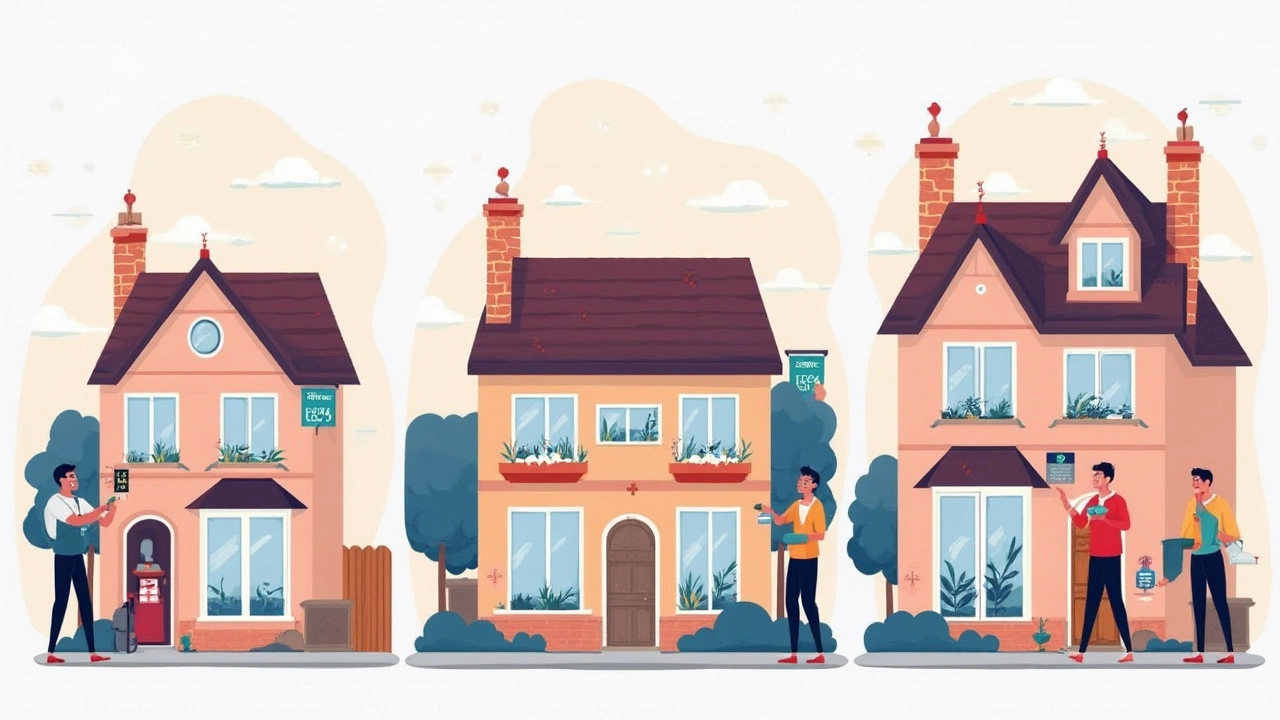
Extras That Change the Bill
Window cleaning prices are never just about the glass. Several things can sneak onto your bill—even if you thought you were just ordering a regular clean.
First up: screen cleaning. A lot of homes have screens covering their windows, and pros almost always tack on a fee for pulling those out and actually cleaning them. Don’t be surprised if that adds a few bucks per window, or even a flat charge per job.
Next are storm windows and French panes. These aren’t just a pain for homeowners—they take more time for professionals, too. Expect at least 20-50% more per window with these types.
Hard water stains are another common culprit. If you live somewhere with mineral-heavy water, you probably have those crusty spots that basic soap doesn’t touch. Companies often tack on $2 to $10 extra per window (sometimes more) for scrubbing that off.
Got extra tall windows or skylights? The price climbs fast there. Anything that needs ladders or extension poles is pricier because of the risk and time involved.
- Interior window cleaning can be extra, rather than included in the usual “outside-only” price.
- Track and sill cleaning almost always costs more—they’re filthy, and it takes longer to clean them right.
- If you haven’t cleaned your windows in years, you might get slapped with a “first-time cleaning” upcharge. There’s just more buildup to scrub off.
Here’s a simple breakdown of common extras you might see from a professional window cleaning company:
| Extra Service | Typical Cost |
|---|---|
| Screen Cleaning | $2-$4 per screen |
| Storm Windows | $5-$12 each |
| Hard Water Removal | $2-$10 per window |
| Track/Sill Cleaning | $1-$5 per window |
| Skylights | $10-$20 each |
When you see a super cheap window cleaning cost advertised, check the fine print. A lot of these extras aren’t included in the base price—so the real bill can go up quick.
How to Save Money on Window Cleaning
Window cleaning might sound like a luxury, but there are real ways to cut the price without cutting corners. The biggest money-saver is simple: book regular window cleanings. If windows are maintained, there’s less dirt build-up, so crews spend less time scrubbing. That means a quicker, cheaper job. Most pro cleaners actually offer lower rates if you schedule visits every few months instead of just once a year.
Another tip—ask about bundled services. Lots of companies shave a chunk off your bill if you combine window cleaning with things like gutter cleaning or power washing. If you and your neighbors all hire a cleaner on the same day, that can also get you a group discount. It saves the company time moving between jobs.
Try not to wait until your windows look like frosted glass. Hard water stains, baked-on pollen, or grime that’s been there for ages takes longer (and costs more) to shift. Here’s something else: skip the extras you don’t really need. If your screens are fine, don’t pay to have them washed every time. Focus on the glass, and ask the company to quote that alone.
And don’t just go with the first name you see on Google. Get 2-3 quotes. Some companies also have first-time customer deals or seasonal promotions if you ask. Double-check if their prices are per window or per pane—panes are sections, and counting only panes can really add up if your home has lots of smaller windows.
“The best way to control window cleaning costs is by talking to your service provider about frequency and needed services. Many overpay because they don’t ask about package deals or skip self-maintenance between professional visits.” — HomeAdvisor guide, 2024
| Money-Saving Move | Average Savings (%) |
|---|---|
| Regular scheduling | 15-25% |
| Bundled services | 10-20% |
| Group/neighborhood deals | 5-10% |
| Seasonal promos or first-time deals | 5-20% |
Of course, you can handle some of the simpler jobs yourself. If you’re handy with a squeegee and comfortable stretching a bit, keep the outside of ground-floor windows cleaned with DIY kits. Just remember, safety first—don’t try second-story windows if you don’t have the right equipment.
Bottom line? Be proactive. Compare prices, ask questions, and watch for deals if you want those window cleaning costs to actually fit your budget.
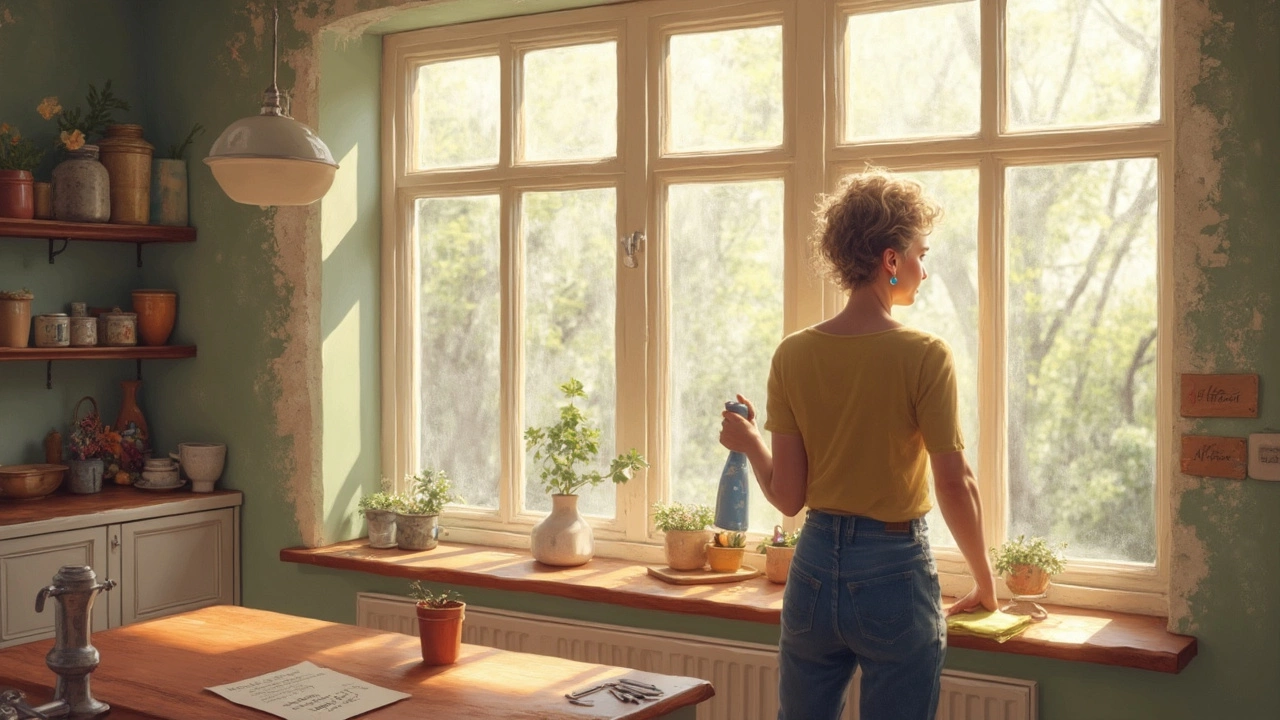
DIY vs. Hiring a Pro: What’s Better?
Some folks grab a spray bottle and tackle window cleaning themselves, thinking it saves serious cash. And, yeah, if you’re just doing a couple of easy-to-reach ground-floor windows, it can be worth it. But things get dicey when you add in time, effort, and—let’s be honest—a bit of frustration. Plus, ever noticed those stubborn streaks that just keep coming back?
The pros have tools and cleaners that put your grocery store stuff to shame. Most use squeegees, water-fed poles, or even purified water systems that keep dust from coming back so quickly. And when ladders or second-story windows are involved, paying a professional window cleaner is really paying for safety. According to the Bureau of Labor Statistics, falls from ladders send more than 100,000 Americans to the ER every year, so there’s real risk if you’re not experienced.
"A lot of homeowners try to save money by cleaning their own windows, but they risk injury and usually don’t achieve the same streak-free outcome a pro can," says Matt Petricca, a cleaning industry consultant.
Here’s a quick look at the main differences:
| Factor | DIY | Professional |
|---|---|---|
| Cost per session | $10-$40 for supplies | $100-$250 on average for a house |
| Time spent | 2-4 hours for average home | 1-2 hours (faster for larger/several windows) |
| Tools needed | Soap, squeegee, towels, ladder | Industrial-grade equipment |
| Results | Often streaks left behind | Streak-free, longer lasting |
| Risk | Falls, broken windows | Insured and trained staff |
Think about what matters to you: saving some cash or saving time and stress? If your home has specialty windows or you live in a place with tough weather (hey, spring pollen where I live is brutal), a professional window cleaner is almost always going to be worth the price. But if you just want quick results and like a hands-on project, doing it yourself is fine—just don’t balance on the top step of that old ladder.
